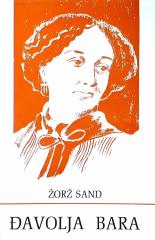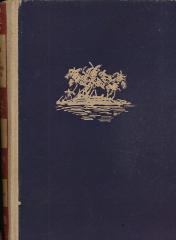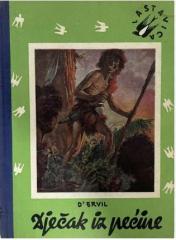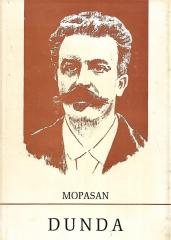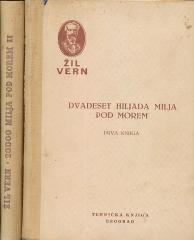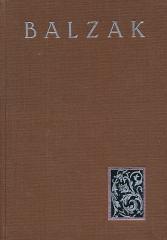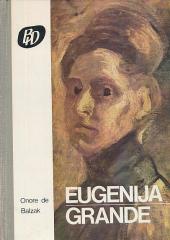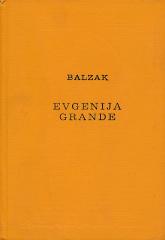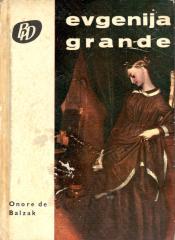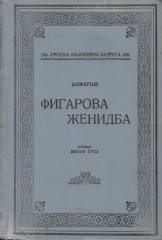Francuska književnost
Đavolja bara / Mala Fadeta / Nahoče Fransoa
Đavolji bar prikazuje život skromnih seljaka u francuskoj pokrajini Beri. Mala Fadeta je priča o devojčici po imenu Fadet, koju je zajednica odbacila zbog njenog izgleda i ponašanja. Fransoa rado priča priču o siročetu koje je odraslo uz ljubaznost mlade
Djeca kapetana Granta
Klasična „vernevska” avantura u kojoj junaci upadaju u nevolju za nevoljom, puna neverovatnih obrta i opasnih situacija koje čitaoca nerviraju, iako je jasno da priča mora imati srećan kraj.
Dječak iz pećine
Knjiga „Pećinski dečak” bavi se temom praistorijskog života, prikazujući avanture i izazove sa kojima se mladi protagonista suočava u pećinskom okruženju.
Dunda i druge novele
Radnja je smeštena u vreme francusko-pruskog rata (1870–1871), a radnja počinje bekstvom francuskih državljana iz Ruana, pod pruskom okupacijom. Među njima je i Elizabet Ruse, "Dunda", devojka lakog morala ali dobrog srca.
Dvadeset hiljada milja pod morem 1-2
Naučnofantastični roman koji je krajem 19. veka napisao čuveni francuski pripovedač za decu i mlade, Žil Vern, koji je takođe bio osnivač žanra naučne fantastike.
Eugenija Grande
„Eženi Grande“ (1833), deo Balzakove Ljudske komedije, je realističan roman koji istražuje pohlepu, porodične odnose i žrtve ljubavi u provincijskom francuskom društvu.
Eugenija Grande
„Eženi Grande“ (1833), deo Balzakove Ljudske komedije, je realističan roman koji istražuje pohlepu, porodične odnose i žrtve ljubavi u provincijskom francuskom društvu.
Evgenija Grande
„Eženi Grande“ (1833), deo Balzakove Ljudske komedije, je realističan roman koji istražuje pohlepu, porodične odnose i žrtve ljubavi u provincijskom francuskom društvu.
Evgenija Grande / Muzej starina
U svojim romanima „Evgenija Grande“ (1833) i „Muzej starina“ (1837), Balzak istražuje univerzalne teme pohlepe, ljudskih strasti, žrtvovanja i moralnih dilema, smeštajući ih u različite društvene kontekste francuskog društva 19. veka.
Figarova ženidba ili Ludi dan: Komedija u pet ćinova
Komedija „Figarova ženidba, ili Ludi dan“ (1784) je nastavak Seviljskog berberina. Figarova ženidba kritikuje društvene nepravde kroz ljubavne veze i intrige, slaveći Figarovu i Suzaninu domišljatost u borbi protiv aristokratske samovolje.
Književnost
- Aforizmi i vicevi
- Američka književnost
- Antička književnost
- Antologije
- Arapska književnost
- Avanturistički roman
- Bosanskohercegovačka književnost
- Britanska književnost
- Bugarska književnost
- Crnogorska književnost
- Dokumentarna književnost
- Drama
- Epistolarna književnost
- Epska fantastika
- Epska književnost
- Erotska književnost
- Esejistika i dnevnici
- Fantastična književnost
- Filmski scenario
- Filozofski roman
- Francuska književnost
- Grčka književnost
- Horor
- Hrvatska književnost
- Humor i satira
- Indijska književnost
- Iranska književnost
- Istorija književnosti
- Istorijski roman
- Italijanska književnost
- Izreke, misli, aforizmi, poslovice
- Japanska književnost
- Jevrejska književnost
- Kineska književnost
- Književna kritika
- Književnost za mlade
- Komedija
- Kratke priče
- Kriminalistički roman
- Latinoamerička književnost
- Latinska književnost
- Ljubavni roman
- Makedonska književnost
- Mađarska književnost
- Moralno-didaktička književnost
- Narodna književnost
- Naučna fantastika
- Nemačka književnost
- Novele
- Pjesme u prozi
- Poezija
- Poljska književnost
- Portugalska književnost
- Poslovice i maksime
- Pripovetke
- Proza
- Ratni roman
- Ruska književnost
- Sažetci i adaptacije književnih dela
- Skandinavska književnost
- Slovenska književnost
- Socijalna književnost
- Srpska književnost
- Teorija književnosti
- Tragedija
- Triler
- Turska književnost
- Češka književnost
- Školska lektira
- Španska književnost
